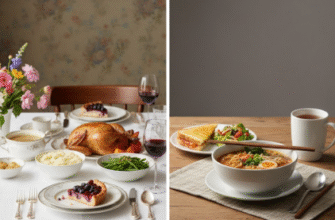That flutter of anticipation when an envelope lands on the doormat, addressed in familiar handwriting, is a feeling increasingly rare yet deeply cherished. Inside, a simple piece of cardstock carries more than just ink; it holds wishes, memories, and a tangible connection to someone thinking of us. Greeting cards, whether celebrating a joyous birthday, marking a solemn holiday, or simply expressing love ‘just because’, are woven into the fabric of our social interactions. But how did this tradition of sending printed sentiments evolve from elaborate personal notes to the multi-billion dollar industry we know today, dominated by names like Hallmark yet still finding space for tiny artisan creators?
Whispers from Antiquity: The Earliest Greetings
The desire to send good wishes across distances is far from a modern invention. Ancient civilizations had their own methods. The Egyptians, for instance, exchanged greetings inscribed on papyrus scrolls to celebrate the New Year. Similarly, the ancient Chinese exchanged messages of goodwill during their New Year festivities, initially handwritten, evolving later into printed forms as technology allowed. These weren’t cards as we know them, but they embodied the same fundamental human need: to acknowledge important moments and convey positive feelings to others, strengthening social bonds.
In Europe, during the Middle Ages and Renaissance, exchanging handmade greetings became more common, particularly around Valentine’s Day and New Year’s. These were often elaborate, personal creations, sometimes incorporating poems, drawings, or intricate paper cuts. Woodcut printing, emerging in the 15th century, allowed for some duplication of designs, often religious in nature, which were exchanged as tokens of goodwill, especially during Christmas and Easter. These early printed greetings, however, remained relatively exclusive, available primarily to the affluent who could afford the craftsmanship involved.
The Dawn of the Commercial Card: A Victorian Innovation
The true ancestor of the modern greeting card arrived in Victorian England, spurred by technological advancements and social change. The pivotal moment is widely attributed to Sir Henry Cole, a prominent civil servant, innovator, and the first director of the Victoria and Albert Museum in London. Finding himself overwhelmed by the customary task of writing personal Christmas letters in 1843, Cole commissioned his friend, the artist John Callcott Horsley, to design a card that could be easily sent to many recipients.
Horsley produced a triptych design. The central panel depicted a family enjoying Christmas festivities, raising a toast to the recipient. Flanking panels illustrated acts of charity – feeding and clothing the poor. Below the images ran the simple greeting: “A Merry Christmas and a Happy New Year to You.” Around 1,000 of these cards were printed using lithography and then hand-colored. Cole used what he needed and sold the rest for a shilling each – quite expensive at the time.
Interestingly, the card wasn’t universally acclaimed. Some temperance groups criticized the central image, which included children being offered wine. Despite this minor controversy, the idea had taken root. Crucially, its viability was massively boosted by the introduction of the Uniform Penny Post in Britain just three years earlier, in 1840. This postal reform standardized postage rates, making it affordable for ordinary people to send letters – and soon, cards – anywhere in the country for just one penny.
Sir Henry Cole’s 1843 Christmas card is widely recognized as the first commercially produced greeting card. The introduction of the Penny Post in 1840 was a critical factor in enabling the widespread adoption of sending cards. This combination of innovation and infrastructure paved the way for a new form of social communication.
Improvements in printing technology, particularly the development of chromolithography in the latter half of the 19th century, further fueled the industry. This technique allowed for mass production of colorful, attractive designs at a lower cost than hand-coloring. Publishers like Marcus Ward & Co. in London became famous for their high-quality cards, often featuring intricate floral designs, sentimental scenes, and elaborate embossing. The Victorian era’s love for ornamentation and sentimentality provided fertile ground for the greeting card business to blossom.
Crossing the Atlantic: Cards Conquer America
The greeting card trend soon found fertile ground in the United States. Initially, many cards sold in America were imported from Britain. However, a German immigrant named Louis Prang set up a lithographic workshop near Boston in the 1860s and began producing high-quality greeting cards. Prang is often called the “father of the American Christmas card.” He invested heavily in sophisticated printing processes, employing numerous color stones to create rich, detailed images that rivaled fine art prints. He organized design competitions and focused on quality, making his cards highly sought after, though relatively expensive.
By the late 19th and early 20th centuries, cheaper printing methods and the immense popularity of postcards (which often carried brief greetings) made sending sentiments more accessible. Postcards became a collecting craze, often featuring local views, humorous illustrations, or holiday themes. This period saw the democratization of sending wishes, moving beyond the elaborate Victorian cards to simpler, more frequent communication.
The Rise of an Empire: Hallmark
No history of greeting cards is complete without mentioning the rise of Hallmark. In 1910, a young man named Joyce C. Hall arrived in Kansas City, Missouri, with little more than ambition and two shoeboxes full of postcards. He initially focused on the postcard business, recognizing the public’s appetite for affordable ways to stay in touch. However, he soon saw potential in providing higher quality greeting cards for specific occasions beyond just holidays.
Hall and his brother Rollie founded Hall Brothers. They faced early setbacks, including a fire that destroyed their inventory in 1915. Undeterred, they purchased engraving equipment and began producing their own original card designs. A key innovation was recognizing the desire for more privacy than a postcard allowed; they began marketing folded cards sold with envelopes in 1917. They also pioneered the concept of dedicated display fixtures for cards in stores, making them easier for customers to browse and purchase.
The company, which eventually became Hallmark Cards in 1954, played a monumental role in shaping the modern greeting card industry. They focused on understanding consumer emotions and creating cards for a vast array of life events – birthdays, anniversaries, graduations, sympathy, get well soon, congratulations, and simple expressions of love and friendship. Their marketing slogan, “When You Care Enough to Send the Very Best,” captured the essence of why people choose physical cards.
The 20th Century: Diversification and Cultural Reflection
The 20th century saw greeting cards become an integral part of social customs. Designs evolved dramatically, reflecting changing artistic tastes and social norms. The ornate sentimentality of the Victorians gave way to the cleaner lines of Art Nouveau and Art Deco, followed by humorous cartoons, photographic cards, and more abstract or contemporary styles. The messages also changed, sometimes becoming more direct, witty, or informal.
Major historical events also impacted the industry. During World War I and World War II, sending cards became a vital way for families to stay connected with soldiers overseas and maintain morale on the home front. Patriotic themes were common, and cards often carried messages of hope, support, and longing for reunion.
The range of occasions covered by greeting cards exploded. Mother’s Day and Father’s Day became major card-sending holidays. Specific birthday cards (for age, relation), anniversary cards (by year), and cards for almost any conceivable event emerged. Companies like American Greetings, founded in 1906, grew alongside Hallmark, offering competition and further diversifying the market.
- Birthdays: Became the single largest card-sending occasion.
- Holidays: Christmas remained dominant, but Easter, Valentine’s Day, Thanksgiving, Hanukkah, and others spurred specific card lines.
- Life Events: Weddings, new babies, graduations, new homes, retirement.
- Expressions of Care: Sympathy, get well, thinking of you, encouragement, apology, thank you.
- Love and Friendship: Cards specifically designed to express affection and appreciation outside of traditional holidays.
The Digital Age and the Enduring Appeal of Print
The advent of the internet and digital communication presented a challenge to the traditional greeting card industry. E-cards offered instant delivery, multimedia features, and often lower (or no) cost. Social media provided platforms for quick birthday wishes and holiday greetings. Some predicted the demise of the paper card.
However, the physical greeting card has proven remarkably resilient. While e-cards serve a purpose for quick, casual greetings, many people feel they lack the personal touch and emotional weight of a tangible card. There’s something inherently special about receiving a card chosen specifically for you, holding it in your hands, seeing the sender’s signature, and having a physical keepsake of their sentiment.
Despite the convenience of digital greetings, physical cards retain a unique value. Their tangibility offers a sensory experience—the feel of the paper, the visual design, the handwritten note. This physical presence often translates into a stronger emotional impact and serves as a lasting memento.
The modern market reflects this. While mass-market cards from major publishers remain popular, there’s also a thriving niche for specialized cards: high-end letterpress designs, handmade cards from independent artists (often sold online or at craft fairs), cards with specific humor, or those catering to particular subcultures or interests. The act of choosing, writing, and sending a physical card signifies a level of effort and thoughtfulness that resonates deeply in our fast-paced digital world.
From ancient papyrus scrolls and Victorian innovations to the vast displays in modern stores and the niche creations of artisans, the history of the greeting card is a story of human connection. It reflects technological progress, artistic trends, and evolving social customs. Whether it’s a Hallmark classic for a birthday, a carefully chosen holiday message, or a simple note expressing love, the humble greeting card continues its centuries-old mission: delivering wishes and bridging distances, one heartfelt sentiment at a time.







